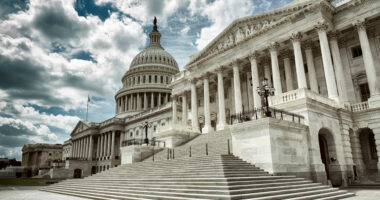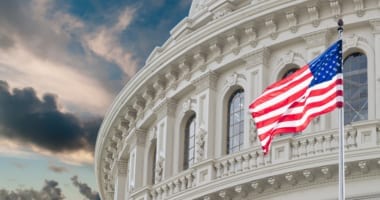K-12 Organizations Strongly Urge Congress to Include K-12 School Facilities in Reconciliation Bill
As Congress moves forward with negotiations on a budget reconciliation bill, NAESP and other national K-12 organizations are strongly urging the inclusion of at least $130 billion in funding for K-12 public school facilities.

As Congress moves forward with negotiations on a budget reconciliation bill, NAESP and other national K-12 organizations are strongly urging the inclusion of at least $100 billion in direct grants and $30 billion in bonds for K-12 public school facilities—consistent with the Reopen and Rebuild America’s Schools Act, passed by the U.S. House of Representatives in July 2020. K-12 infrastructure funding was not included in the Senate bipartisan infrastructure legislation, however the reconciliation bill provides Congress with another opportunity to provide robust federal investments in America’s K-12 facilities.
The organizations’ letter draws attention to the decades of underinvestment in K-12 facilities and the resulting alarming health and safety risks posed to students and staff. A 2016 State of Our Schools Report found state and local governments underfund K-12 facilities by $46 billion annually. A GAO study further illuminates the scope of the problem: In about a quarter of all school districts, at least half of their schools needed upgrades or replacements to major building systems, such as heating ventilation and air conditioning (HVAC) systems, plumbing, or windows. The study also found 41 percent of districts need to update or replace HVAC systems in at least half of their schools. A leaking HVAC system or roof can cause water damage, exposing students and staff to mold or asbestos. Robust funding for K-12 facilities would strengthen state and local governments’ capacity to address these pressing health risks, as well as others such as airborne polychlorinated biphenyls (PCBs).
The longstanding neglect hits low-income school districts and those districts with particularly aging facilities the hardest. These districts often lack a local tax base that can be leveraged for new school construction, major capital improvements, or building renovations and modernizations. The result is millions of students attend school in buildings in need of major repairs, creating unsafe conditions that depress student and educator performance. Including strong funding for K-12 school infrastructure in the reconciliation bill would help reduce maintenance backlogs, positioning these districts to address long overdue school building upgrades and modernizations.
To unleash the American Rescue Plan’s enormous potential and enable optimal student learning, Congress must embrace a holistic federal K-12 investment strategy that includes robust investments in K-12 infrastructure and ensures safe and healthy learning environments for all students. By supporting the funding levels in the Reopen and Rebuild America’s Schools Act, Congress can improve educational opportunities for millions of students and chart a new course for K-12 education.




